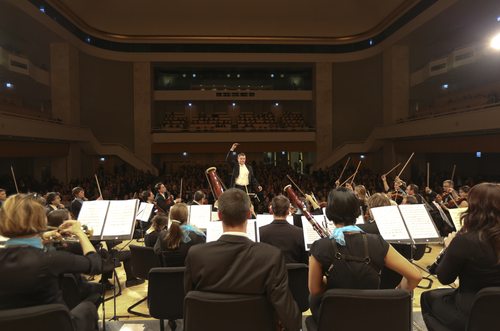
October 2, 2014; ArtnetNews
On October 1st, the Wallace Foundation sent a ripple of excitement through America’s performing arts community by announcing a new $40 million initiative to fund about 25 organizations between 2015 and 2021 in their efforts to attract new audience members even as they retain existing ones. In the process, the foundation hopes not only to enhance sustainability for the cultural organizations that receive the grants, but also to continue to advance understanding across the sector in terms of how best to grow and engage arts audiences.
The new initiative, announced by foundation president William I. Miller, is called “Building Audiences for Sustainability.” The grantee organizations will be selected from a national nomination process that is already well underway. Through interviews with 75 arts leaders, 300 prospective organizations were initially identified, and that list has now been culled to a select group of 80 organizations—with a diverse mix of geography, size, discipline and audience goals. These 80 groups will receive RFPs from the foundation by mid-October and will then have one month to submit their grant proposals. Grant recipients will be announced in February 2015.
The nominators included representatives of seven national arts service organizations that the Wallace Foundation has partnered with in recent years for its audience-building initiatives. These organizations did not have a say in selecting the 80 arts groups that will receive RFPs, but they are expected to play an important role in disseminating the findings from the new initiative to their member organizations. The service partners are:
- American Alliance of Museums
- Association of Performing Arts Presenters
- Chamber Music America
- Dance/USA
- League of American Orchestras
- OPERA America
- Theatre Communications Group
In addition, the foundation works with the Association of Arts Administration Educators to help ensure that new knowledge about audience building is shared with future arts leaders in undergraduate and graduate programs.
Sign up for our free newsletters
Subscribe to NPQ's newsletters to have our top stories delivered directly to your inbox.
By signing up, you agree to our privacy policy and terms of use, and to receive messages from NPQ and our partners.
Wallace Foundation director of arts Daniel Windham noted, “We hope this initiative will shed light on approaches to building audiences that are sustainable. Sharing our findings is at the core of all Wallace initiatives, and the insights we will gather from this important work aim to help performing arts organizations across the country have more and better information about what works, what doesn’t, and why.”
The foundation has been among the leaders in funding and studying audience development for the arts sector over the past 15 years. In fact, the announcement of the new funding initiative was accompanied by the release of the foundation’s fifth research report on the topic, The Road to Results: Effective Practices for Building Arts Audiences, based on case studies of ten visual and performing arts groups that previously received funding from the foundation for audience-building work. (See today’s related newswire, “Infographic: Nine Effective Practices for Building Audiences for the Arts.”)
“Building Audiences for Sustainability” has two key components:
-
From 2015-2019, grantee organizations will design and carry out audience-building projects. Each organization will complete at least two cycles of work, with the second incorporating learnings from the first. Each grantee organization will also receive market research and organizational development support during this period.
-
From 2019-2021, the foundation will commission a series of independent public reports “drawing on the experience and evidence generated by the participating arts organizations” and building on the foundation’s previous work in this area.
The endgame is, of course, to find ways to make organizations not only sustainable but self-sustaining. Audience development leads to increased earned revenue, which leads to less dependence on the increasingly undependable sources of contributed revenue that most nonprofits—and, perhaps especially, those in the arts—are learning to live without, for better or for worse.—Eileen Cunniffe












